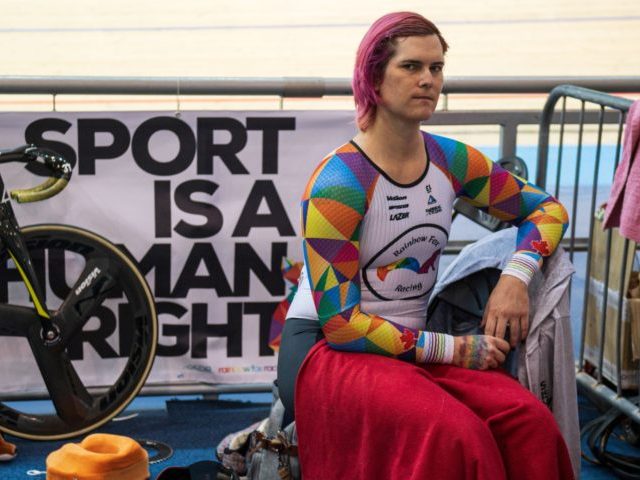The American College of Pediatricians (ACPeds) is rejecting the recent claim by the medical and science director of the International Olympic Committee (IOC) that the science is settled on transgender athletes and that “everyone agrees trans women are women.”
Drs. Michelle Cretella, executive director of ACPeds, and Quentin Van Meter, pediatric endocrinologist and president of ACPeds, recently provided the scientific “truth” regarding the bodies of male athletes who identify as women.
In a column at the Daily Signal, Cretella and Van Meter wrote there are at least two recent peer-reviewed studies that challenge the IOC’s 2015 ruling that male athletes “who transition from male to female are eligible to compete in the female category” provided their testosterone level has maintained below a given threshold for at least a year.
The pediatricians reject comments, such as those made by IOC Medical and Science Director Dr. Richard Budgett, who claimed “everyone agrees that trans women are women,” as he celebrated New Zealand weightlifter Laurel Hubbard, a male who identifies as a female.
Budgett praised Hubbard, the first man permitted to compete as a woman at the Olympic games, for exhibiting “courage and tenacity,” Breitbart News reported.
“To put it in a nutshell, the IOC had a scientific consensus back in 2015,” Budgett said. “There are no IOC rules or regulations around transgender participation. That depends on each international federation.”
“There are lots of aspects of physiology and anatomy, and the mental side, that contribute to an elite performance,” Budgett added. “It’s very difficult to say, ‘yes, she has an advantage because she went through male puberty,’ when there’s so many other factors to take into account.”
Cretella and Van Meter, however, observed the journal Sports Medicine published a study in February that found “the muscular advantage enjoyed by transgender women is only minimally reduced when testosterone is suppressed”:
The performance gap is more pronounced in sporting activities relying on muscle mass and explosive strength, particularly in the upper body. Longitudinal studies examining the effects of testosterone suppression on muscle mass and strength in transgender women consistently show very modest changes, where the loss of lean body mass, muscle area and strength typically amounts to approximately 5% after 12 months of treatment.
“Sports organizations should consider this evidence when reassessing current policies regarding participation of transgender women in the female category of sport,” the study’s authors concluded.
Similarly, a study published this year in the British Journal of Sports Medicine found “LBM [lean body mass] and muscle area in transwomen remain above those of cisgender women, even after 36 months of hormone therapy.”
“[H]ormone therapy decreases strength, LBM and muscle area, yet values remain above that observed in cisgender women, even after 36 months,” the researchers concluded. “These findings suggest that strength may be well preserved in transwomen during the first 3 years of hormone therapy.”
While these studies provide scientific data showing biological men maintain strength advantages over women even after hormone therapy, Cretella and Van Meter asserted the “scientific reality” is that “genetics – not testosterone is at the root of all that makes the two sexes different”:
The simple truth is that males outperform females in regard to speed and strength due to inborn genetics and sex hormones. This has consistently been proven by long-term research on elite athletes when matched for training.
The sex hormone testosterone plays an important role in regulating bone mass, fat distribution, muscle mass, strength, and the production of red blood cells leading to higher circulating hemoglobin. This is particularly true during puberty.
After puberty, male circulating testosterone concentrations are 15 times greater than those of females at any age. The result is a clear male advantage in regard to muscle mass, strength and circulating hemoglobin levels even after adjusting for sex differences in height and weight.
The pediatricians also pointed to studies that have identified more than 3,000 genes that are expressed differentially in the skeletal muscles of males and females.
“Obvious bone differences due to a combination of genetics and hormones even exist at birth,” they explained, adding “the average male is heavier and taller than the average female and this advantage continues, when controlled for stage of puberty, throughout life.”
“Genetics is why a male who self-identifies as female remains male, and giving estrogen to a male does not transform him into a female,” they stated, observing biology is determined at the cellular level.
“Science and common sense agree,” they asserted. “When males are allowed to compete in athletic leagues designed for females, they deprive girls and women of the opportunity to safe and fair participation in sports.”

COMMENTS
Please let us know if you're having issues with commenting.